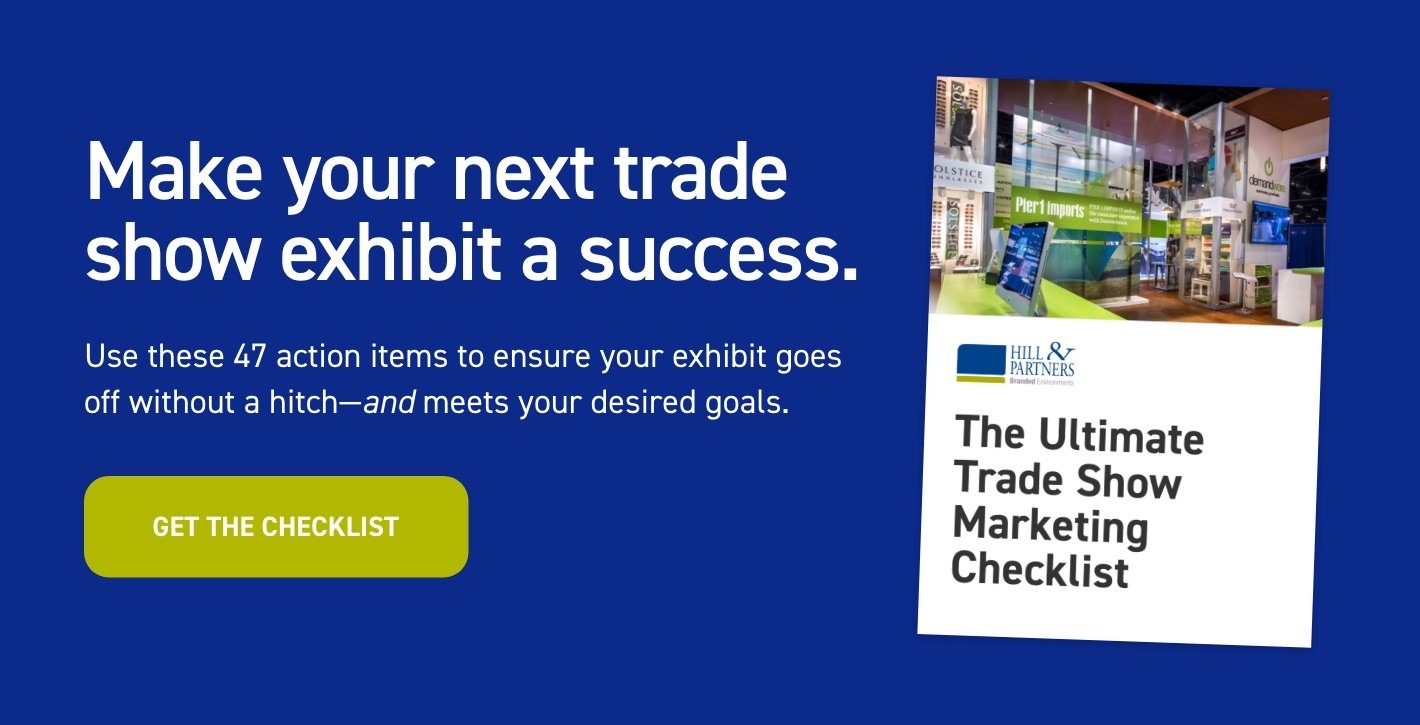14 Trade Show Attendance (& Other) Statistics Heading Into 2020

With an average trade show program budget of $2.5 million for U.S. companies, it’s important to spend time doing market research before deciding which shows to attend. From general attendance numbers to potential return on investment (ROI), you want to know the state of the industry so you can plan accordingly. To get you started, we’ve curated a list of 14 trade show statistics below.
Trade Show Attendance Statistics
These numbers paint a picture of attendee preferences and satisfaction levels:
- In 2018, marketers and exhibitors in the U.S. attended about 23 regional trade shows, 14 national trade shows, and 8 international trade shows. They expect a similar pattern of attendance for 2019.
- Do marketers prefer smaller or larger trade shows? 92% say small trade shows are a better investment for three main reasons: they make it easier to connect with customers (75%); they can secure thought leadership speaking roles (67%); and they can host events with less competition (50%).
- From a flipped perspective, marketers who were disappointed with their attendance at major trade shows cited these reasons as to why: high attendance cost (45%), not getting the right spot on the conference floor (45%), and low-value leads (36%).
- Trade show attendees are satisfied across the globe, with satisfaction levels skewing higher in the Americas (34% being very satisfied), lower in Asia (only 20% being very satisfied), and somewhere in the middle in Europe, Africa, and the Middle East.
- Nearly 15 years’ worth of data indicates that about 1/3 of trade show visitors are first-time attendees, with a slight uptick to that average from 2011 onwards.
Trade Show Effectiveness Statistics
These trade show statistics on effectiveness showcase what marketers feel works (and doesn’t):
- Exhibition companies agree on four main issues facing the exhibition industry: the state of the economy in their home markets (25%), global economic developments (20%), competition from within the industry (19%), and internal challenges (15%).
- Thirty-three percent of trade show respondents reported an increase in trade show exhibitors from 2017 to 2018, and 32% expect an increase from 2018 to 2019.
- Marketers perceive social media as a great tool to use during a trade show, with 78% saying that it helps keep track of spontaneous show moments and creates a channel for people to experience show activities. Half the respondents noted that social media even helps bring more people to a company’s booth.
- Marketers looking for media coverage during major trade shows are typically disappointed for three main reasons: their company’s news being lost in other trade show news stories (31%), their company not being covered at all (31%), or their media interviews not resulting in any articles (23%).
- Over 80% of exhibitors invest in some type of show sponsorship—digital, print, signage, etc. And though more than half of exhibitors say they don’t set measurable goals for sponsorships, about nine out of 10 indicate sponsorships meet or exceed their expectations.
- Exhibitors find speaking opportunities, networking events, and social media as the most effective sponsorship types. In contrast, they indicate headrest covers, taxi toppers, and public-transit graphics as the least effective.
Trade Show ROI Statistics
These trade show statistics on ROI help answer key questions about the value of event spend:
- Does investing in branded experiences offer a good return? Seventy-four percent of attendees say engaging with branded event marketing experiences makes them more likely to buy the products being promoted.
- How are companies budgeting? Forty-eight percent of marketers and exhibitors plan to maintain their budget for trade shows, while 36% plan to increase their budget.
- How are companies measuring the ROI of events and exhibitions? Attendance is the leading ROI metric among event planners (17%), marketers (21%), and executives (14%). Other ROI metrics include attendee satisfaction, number of leads generated, amount of revenue generated, and the comparison of budget to actual spend.
Bonus: Want info on how to track your success at trade shows? Check out this great article outlining the four steps involved in measuring the value of trade show marketing.
Don’t forget to be social! Share these trade show statistics with your team and fellow marketers in an email, on Slack, or on social media.

